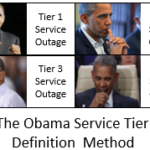
Wow, I can’t believe the amount of stir there is around this topic. Why is there so much confusion? Organizations try to put ridiculous rules, that are for the most part poorly defined and even more poorly enforced, around how critical their IT Services are to the operation of the organization. Does it affect customers’ …
Read more

